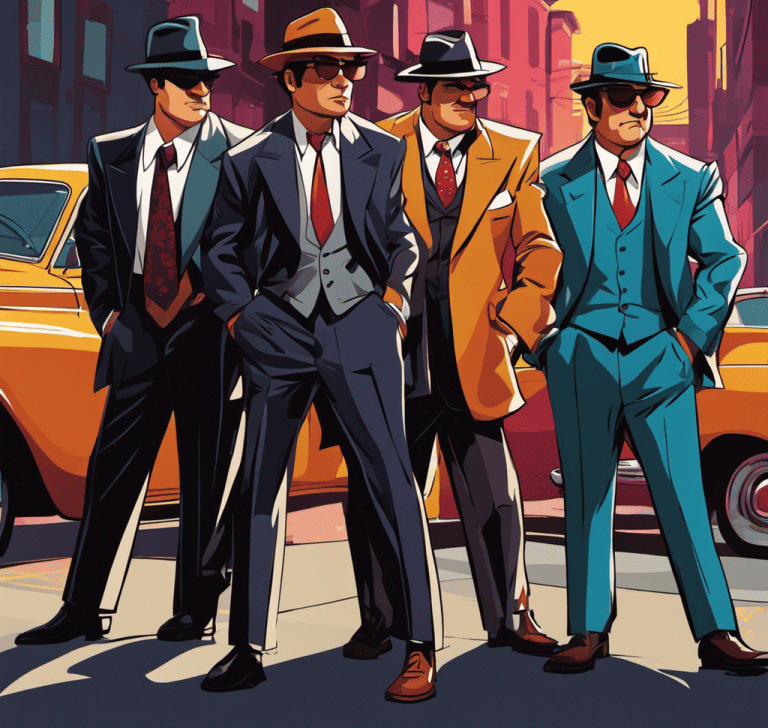There’s one rule most writers try to follow: show, don’t tell.
For example, instead of telling your reader that your characters get on very well, write a whole scene where they bounce off of each other during a conversation.
This technique is also what’s called indirect characterization.
In this article, we’ll go over what it is, how it differs from direct characterization, why it’s so important, and how you can use it effectively in your writing.
There’s a lot to cover, so let’s dive right in!
Indirect Characterization VS Direct Characterization
While direct characterization tells it to the reader as it is (“She was brave”), indirect characterization uses different cues to point to the true nature of the character without being too on the nose (“She was afraid, but she jumped in anyway”).
In this way, the reader is free to form their own opinion on the character in question and to think more critically during the reading experience.
This isn’t to say that direct characterization never comes in handy – sometimes, it can be very useful, for example when you want to mention something offhandedly and not spend too much time on it – but indirect characterization is generally considered more expansive and intriguing.
Why Indirect Characterization Matters
The short answer is that it adds tremendous value and complexity to your writing.
The long answer ensues:
- It helps us get to know fictional characters in the same way we do real people – through their actions and words rather than third-person descriptions
- It opens up space for individual interpretations of the characters’ behavior, allowing for rich discussions among readers
- It makes for a more engaging reading experience because the reader gets to imagine the whole scene and follow individual cues to arrive at their own conclusions
- It enriches the story, providing the reader with more content to expand their imagination and get sucked into the fictional world
How to Use Indirect Characterization in Your Writing: 3 Tips
Remember that indirect characterization relies on subtlety and nuance. If you say, “She fought bravely,” it’s toeing the line with direct characterization. Instead, include situations where your character almost gives up but finds the strength within themselves to display courage and keep going.
It’s incredibly important to know your characters well when using indirect characterization. One of the most common pitfalls is to make your character behave in a way that’s completely at odds with what they’ve done in the past, making it confusing for the reader to pinpoint who exactly this character is and what they stand for.
You don’t have to abide by “show, don’t tell” all the time. Sometimes – especially if there’s a time jump – a few paragraphs suffice to move the plot forward. Balance is everything.
RELATED READ: Character Motivation: Types and Examples
Indirect Characterization: 5 Ways to Describe Your Character
Alright, now that we know it’s better to indirectly hint at someone’s personality rather than to describe it straightforwardly, how do you go about doing so?
In general, you’ve got five different options.
Actions: Actions speak louder than words. If your character runs into a building on fire to save their cat, the reader doesn’t need to be told they’re brave and compassionate – they can see it in the action itself.
Words: Dialogues are an incredible tool when it comes to revealing characters’ personality traits and relationship dynamics. The way your character speaks to others says a great deal about them.
Appearance: If someone always dresses meticulously, it will add to the image of a well-collected person you’re trying to build. If they always drag their shoelaces behind, it might say something about their forgetfulness or chaotic personality. Appearance is a very effective tool to portray who someone is.
Thoughts: No matter if you’re writing in the first-person or third-person point of view, there’s a high likelihood the reader will be able to see into your protagonist’s head – and the thoughts you reveal demonstrate who they are on the inside. This is a great opportunity to showcase a complex personality as your character may feel a certain way and act differently out of fear or anger, adding a lot of conflict and drama.
Effect: Your characters don’t exist in a vacuum. Every fictional world is a map of relationships, and the effect your character has on others is yet another way to indirectly describe who they are or how they are perceived.
Examples of Indirect Characterization in Literature
Here are some examples of indirect characterization:
Sorcery of Thorns by Margaret Rogerson:
- “It didn’t seem right that he should wait on her hand and foot. ‘Would you… would you like to join me?’”
Here, the protagonist’s compassion and politeness are expressed through thoughts and words.
The Hunger Games by Suzanne Collins:
- “’I volunteer!’ I gasp. ‘I volunteer as tribute!’”
Katniss’s decision to volunteer and join the Hunger Games to save her sister is an obvious display of bravery and love that’s conveyed through action, as well as words.
A Good Girl’s Guide to Murder by Holly Jackson:
- “’ Loz, you could do so much better than him.’”
When Cara tells Lauren she can do better than the boy who broke up with her, it tells us something about the boy’s character – his actions, as well as the effect he has on others, paint him in a negative light.
RELATED READ: Character Development: Definition and Tips
Conclusion
Indirect characterization is a highly effective way to make your story more immersive and create a realistic portrait of your characters.
What’s more, it serves as a great editing tool. While you’re going through your finished draft, keep asking yourself, “Can I show this rather than tell it?”
You might find that many scenes can be expanded upon, making for a more engaging and complex reading experience.



















